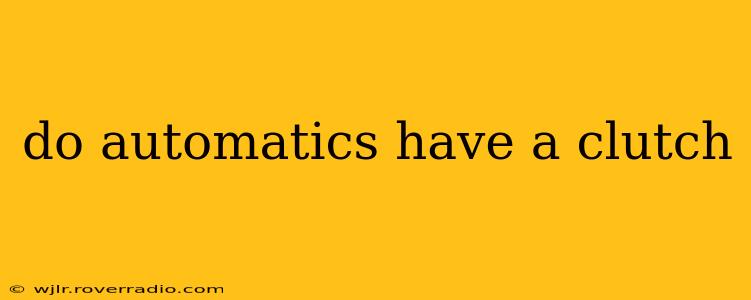Do Automatic Cars Have a Clutch?
No, automatic cars do not have a clutch pedal. This is the fundamental difference between automatic and manual transmission vehicles. The clutch's function in a manual transmission is to disconnect the engine from the transmission, allowing the driver to change gears smoothly. Automatic transmissions handle this process internally, without the need for driver intervention via a clutch pedal.
What replaces the clutch in an automatic transmission?
Instead of a clutch pedal, automatic transmissions utilize a torque converter. This hydraulic device acts as a fluid coupling, transferring power from the engine to the transmission smoothly and automatically. The torque converter allows the engine to run continuously while the transmission seamlessly shifts between gears.
How does an automatic transmission work without a clutch?
The torque converter is a key component. It uses fluid to transfer power, allowing for smooth transitions between gears. Inside the transmission, a sophisticated system of planetary gears and hydraulic actuators manages the gear changes. Electronic controls, often managed by a computer, precisely regulate the flow of hydraulic fluid to select the appropriate gear ratio based on factors like engine speed, throttle position, and vehicle speed.
Do automatic cars have any clutch-like components?
While there's no clutch pedal, some automatic transmissions incorporate clutch packs internally. These are multi-plate clutches that engage and disengage specific gear sets within the transmission. However, these are internal components controlled electronically and are not operated by the driver.
What are the advantages of not having a clutch in an automatic car?
The absence of a clutch pedal offers several significant advantages:
- Ease of driving: Automatic transmissions are considerably easier to learn and operate, making them a popular choice for novice drivers.
- Reduced driver fatigue: The lack of clutch operation reduces driver fatigue, particularly in stop-and-go traffic.
- Smoother driving experience: The automatic gear changes generally result in a smoother and more comfortable driving experience.
Are there any disadvantages to not having a clutch?
While automatic transmissions offer convenience, there are some potential drawbacks:
- Lower fuel efficiency (in some cases): While modern automatics are becoming increasingly fuel-efficient, some older models or those with less sophisticated designs may exhibit slightly lower fuel economy compared to manual transmissions.
- Less driver control: While this isn't always a disadvantage, some drivers prefer the increased control and engagement offered by a manual transmission.
- Higher initial cost: Automatic transmissions are often more expensive than manual transmissions, impacting the initial purchase price of the vehicle.
What about CVT transmissions? Do they have a clutch?
Continuously Variable Transmissions (CVTs) are a type of automatic transmission, and they also do not have a clutch pedal. CVTs use a different mechanism for varying gear ratios compared to traditional automatic transmissions, but the fundamental principle of eliminating the need for driver-operated clutch engagement remains the same.
In summary, while some internal clutch-like components might exist within an automatic transmission, the answer to the question "Do automatics have a clutch?" is a definitive no, in terms of a driver-operated clutch pedal. The automatic transmission system manages gear changes internally and seamlessly without the need for driver intervention.
